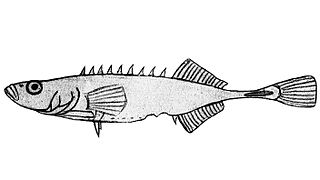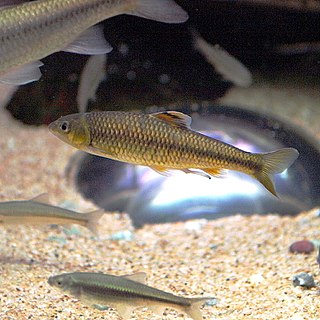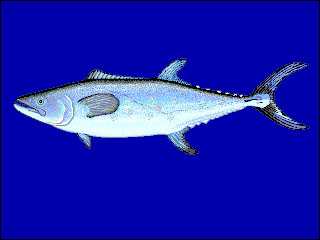
The yellow bittern is a small bittern. It is of Old World origins, breeding in the northern Indian Subcontinent, east to the Russian Far East, Japan and Indonesia. It is mainly resident, but some northern birds migrate short distances. It has been recorded as a vagrant in Alaska and there is a single sighting in Great Britain, from Radipole Lake, Dorset on November 23, 1962 – however, the British Ornithologists' Union has always considered this occurrence to be of uncertain provenance and currently it is not accepted onto the official British List.

Clonorchis sinensis, the Chinese liver fluke, is a liver fluke belonging to the class Trematoda, phylum Platyhelminthes. It infects fish-eating mammals, including humans. In humans, it infects the common bile duct and gall bladder, feeding on bile. It was discovered by British physician James McConnell at the Medical College Hospital in Calcutta (Kolkata) in 1874. The first description was given by Thomas Spencer Cobbold, who named it Distoma sinense. The fluke passes its lifecycle in three different hosts, namely freshwater snail as first intermediate hosts, freshwater fish as second intermediate host, and mammals as definitive hosts.

The Chinese alligator, also known as the Yangtze alligator, China alligator, or historically the muddy dragon, is a crocodilian endemic to China. It and the American alligator are the only living species in the genus Alligator of the family Alligatoridae. Dark gray or black in color with a fully armored body, the Chinese alligator grows to 1.5–2.1 metres (5–7 ft) in length and weighs 36–45 kilograms (80–100 lb) as an adult. It brumates in burrows in winter and is nocturnal in summer. Mating occurs in early summer, with females most commonly producing 20–30 eggs, which are smaller than those of any other crocodilian. The species is an opportunistic feeder, primarily eating fish and invertebrates. A vocal species, adults bellow during the mating season and young vocalize to communicate with their parents and other juveniles. Captive specimens have reached age 70, and wild specimens can live past 50.
The Chinese sturgeon is a critically endangered member of the family Acipenseridae in the order Acipenseriformes. Historically, this anadromous fish was found in China, Japan, and the Korean Peninsula, but it has been extirpated from most regions due to habitat loss and overfishing.

The Chinese softshell turtle is a species of softshell turtle that is native to China and Taiwan, with records of escapees—some of which have established introduced populations—in a wide range of other Asian countries, as well as Spain, Brazil and Hawaii.

The South China catshark is a catshark of the family Scyliorhinidae, known only from the holotype, which was taken from the South China Sea at a depth of 537 m. Its length is 42 cm, but this measurement was taken from an immature specimen. The reproduction of the South China catshark is oviparous.

The Asian parti-colored bat is a species of parti-coloured bat. An adult Asian parti-colored bat has a body length of 6–7 cm (2.4–2.8 in), a tail of 4.3–4.5 cm (1.7–1.8 in), and a wing length of 5 cm (2.0 in). Asian parti-colored bats are distributed across East Asia, from Taiwan through eastern China, eastern Mongolia and Russia (Siberia) to the Korean Peninsula and Japan.
Sinobdella sinensis is an East Asian species of the spiny eel family of the order Synbranchiformes. It is the only species in the genus Sinobdella according to FishBase, but another species, S. dienbienensis, is placed there by Catalog of Fishes.

Rhodeus sinensis is a subtropical freshwater fish belonging to the Acheilognathinae subfamily of the family Cyprinidae. It originated in inland rivers in China, and has been introduced as an exotic species in Afghanistan. The fish reaches a length up to 5.2 cm (2.0 in), and is native to freshwater habitats with a pH of 6.8 to 7.8, a hardness of 20 DH, and a temperature of 10 to 25 °C. When spawning, the females deposit their eggs inside bivalves, where they hatch and the young remain until they can swim.

The shrew gymnure, or shrew hedgehog, is a species of mammal in the family Erinaceidae and is the only extant species in the genus Neotetracus. It is found in China, Myanmar, and Vietnam.

The fanray is a species of ray in the family Platyrhinidae that lives in the western Pacific Ocean. It typically grows to a length of 30–50 centimetres (12–20 in) and a weight of 200–500 grams (7.1–17.6 oz), with a brown upperside and a white underside. It eats fish and crustaceans and has poor mobility. Males live to age five and females to age twelve, with both sexes maturing between two and five years. The species is found in China, Japan, Taiwan, Korea, Vietnam, and possibly Indonesia, in waters shallower than 100 metres (330 ft). It is probable that its population is declining due to being caught as a bycatch.

The Amur stickleback is a species of fish in the family Gasterosteidae. This freshwater, brackish water, or marine benthopelagic fish is usually 6.5 cm in length. It is widespread in East Asia: off the Korean peninsula, northeast and north China, Japan, the Kuril Islands, the Kamchatka peninsula, and the basin of the Amur River.

Sarcocheilichthys is a genus of cyprinid fishes found in eastern Asia. There are currently 12 species in the genus.

The Chinese mackerel, also known as the Chinese seerfish, is a ray-finned bony fish in the family Scombridae, better known as the mackerel family. More specifically, this fish is a member of the tribe Scomberomorini, the Spanish mackerels. It is a marine species occurring in the Western Pacific Ocean, but it also enters the Mekong River.

The Chinese rice fish is a species of fish in the genus Oryzias. This freshwater fish occurs in swamps, stagnant parts of streams, rice fields and marshes, and is up to 3.1 cm (1.2 in) long. It was formerly considered a subspecies of the Japanese rice fish. The natural range of the Chinese rice fish is in East and Southeast Asia, including the Yangtze, Mekong, Irrawaddy, Salween, Red River and Nanpangjiang basins. It has been introduced to Kazakhstan and Russia ; also spreading in the Azov basin and has been discovered in the Obytichna River in Ukraine.
Tor sinensis, the Chinese or Red mahseer is a species of mahseer native to the Mekong River. It is known with certainty only from Yunnan, China; reports from Cambodia, Laos, and Thailand require confirmation.
It is one of four currently valid species described from China, the others being Tor laterivittatus, Tor polylepis, and Tor yingjiangensis.
Sarcocheilichthys hainanensis is a species of cyprinid fish found in China, Laos, and Vietnam.
Sarcocheilichthys kiangsiensis is a species of cyprinid fish found in China.
The rainbow gudgeon is a species of cyprinid fish found in China, Taiwan, and the Korean peninsula.
Sarcocheilichthys parvus is a species of cyprinid fish found in China.














